– Dr. Hans-Joachim Rudolph, MRI
As in every occupied, oppressed and exploited country, numerous resistance and liberation movements emerged also in British-occupied India. Contrary to the prevailing perception in the West, most of them didn’t renounce violence. In any case, the image of the Indian struggle for independence conveyed by Richard Attenborough’s film “Gandhi” is rather one-sided and idealized.
Radical and violent liberation movements already existed in the 19th century, but they reached their full potential in the first half of the 20th century. Prominent protagonists were:
- Swami Dayananda Saraswati (1824-1883) who tried to reform Hinduism from the ground up and restored “True Hinduism“. In 1875, he wrote his magnum opus, Satyarth Prakash: “The Vedas alone are of divine origin. If anything is found in other scriptures which contradicts the teachings of the Vedas, they are to be condemned, since only the Vedas are free from error, they are evident in themselves.”
- Bal Gangadhar Tilak (1856-1920) was an Indian nationalist and opposed all forms of imperialism and colonialism. He denied any legitimacy for the British to be in India and saw the country’s development as being severely hampered by the British occupying forces.
- Narendranath Datta, known as Swami Vivekananda (1863-1902): For him, the Muslims who had been living in India for centuries were first and foremost barbaric invaders. Moreover, he was not interested in inter-religious understanding, but was convinced that because of its tolerance, Hinduism is far superior to all other religions.
- Aurobindo Ghose, known as Sri Aurobindo (1872-1950), began publishing the journal “Bande Mataram” in 1906, which became the mouthpiece of the “Nationalist Party”. Aurobindo’s most important concern was to propagate India’s complete independence openly; he was the first politician in India to have the courage to do so publicly.
- Vinayak Damodar Savarkar (1883-1966) developed the idea of an open Hindu nationalism and wrote “Hindutva: Who is a Hindu?“, which later became a kind of fundamental text of Hindutva ideology.
- Keshav Baliram Hedgewar (1889-1940) founded the RSS in 1925 with an aim to organize Hindu community for its cultural and spiritual regeneration and make it a tool for achieving complete independence for a united India.
- Subhas Chandra Bose (1897-1945): Unlike his intra-party rivals Gandhi and Nehru, Bose wanted to achieve India’s independence through military means.
- Nathuram Godse (1910-1949) shot Mahatma Gandhi, was sentenced to death for it and left behind a vindication pamphlet (http://indiansaga.com/whoswho/godse_letter.html).
– India has a rich religious culture dating back thousands of years. The canonization of the Vedas as the supposedly oldest testimonies of the divine was an attempt to bring these partly contradictory traditions to a common denominator. Swami Dayananda Saraswati, however, went far beyond mere religion. For he combined the tradition of the Vedas with an ethnic myth about the origins of India, which still has great influence today. Religion and soil were thus linked together. In other words: India to the Hindus.
– In 1885, members of the new Indian elite came together in Bombay and founded the Indian National Congress (INC). Its members had been educated in English, many were lawyers and understood the workings and fundamentals of the colonial state, but were also frustrated by colonial policies that were made without consultation with the colonized elites. Originally, the INC represented a mild, secular critique of imperialism, but in its early years it was ideologically open to all sides. In the 1890s, a much more radical wing emerged, represented by activists such as Bal Gangadhar Tilak (1856-1920). As the founder of two newspapers, he had considerable influence in western India and was imprisoned twice for his criticism of the colonial government. The moderate attitude of his comrades-in-arms in the INC almost made him despair; he repeatedly wrote articles which, despite their religious allegories, the British regarded as „anti-colonial”.
The Congress movement split in 1907 over the question of whether it would be legitimate to confront the British outside the constitutional framework, for example through boycotts.
– The Hindu scholar Narendranath Datta, known as Swami Vivekananda achieved worldwide fame when he appeared before representatives of Western religious communities at the first meeting of the World Parliament of Religions in 1893. In his speech, he painted a picture of a tolerant, inclusive Hinduism, an image that is still widespread in the West today.
But Vivekananda was not interested in interreligious dialogue: He was convinced that Hinduism is superior to all other religions because of its tolerance:
“I thank you on behalf of the mother of all religions. I am proud to belong to a religion that has taught the world tolerance and universal acceptance.”
– The philosopher and Hindu scholar Aurobindo Ghose, who called himself Sri Aurobindo, was also inspired by Swami Dayananda Saraswati. He was born in 1872, around ten years before Dayananda’s death, in what is now West Bengal. Having grown up for a time in England, he came into contact with Western political philosophy and transferred these ideas to India:
“Elsewhere I have already said: nationalism is not a politics, it is a religion, a faith. I say it again today, but in different words: Sanathan Dharma, the divine order, our religion, is our nationalism.”
This parallel is still significant for the thinking of Hindutva followers today, because it inextricably links religion and the striving for an independent India. This could not be reconciled with the secular understanding of the state of the founders of the Republic of India around Jawaharlal Nehru and Bhimrao Ramji Ambedkar.
Aurobindo also worked on Islam, but went beyond Dayananda’s ideas by increasingly constructing an enemy image from the religion of others. Initially, he was open to the idea that Hindus and Muslims could live together in an independent India. However, in his 1906 essay “On Nationalism”, he developed the idea that Muslims did not belong in India.
The accusation that Muslims are not loyal to the Indian nation because their loyalty belongs first to their own religion and therefore to other Islamic nations is still effective today. It is the basis for conspiracy narratives circulating even in the 21st century, according to which Muslims allegedly want to infiltrate the Indian nation and turn India into a Muslim theocracy.
For Aurobindo, even more than for Dayananda, the Muslims marked a historical injustice; they were a symbol of centuries of foreign rule. From his admiration for the Kshatriya, the caste of warriors and kings, he deduced that violence was not only a legitimate means of atoning for this injustice, but also a masculine ideal that Hindus should strive for. He rejected the principle of non-violence, ahimsa, which is still important in many religions of the Indian subcontinent today.
– Subhash Chandra Bose joined the INC after meeting Gandhi in 1921, quickly rose through the ranks and was elected Lord Mayor of Calcutta in 1930. Because of his commitment to independence, he was sentenced to several terms in British prisons and later placed under house arrest. He became an influential spokesman for the Left in the Indian National Congress. In contrast to his inner-party rivals Gandhi and Nehru, Bose wanted to achieve India’s independence by military means and ultimately fled India in 1941 to seek military aid abroad. After several unsuccessful negotiations, in 1944 he became co-founder and leader of the so-called Indian Legion, a combat unit formed from Indian volunteers and subordinate to the German Waffen SS, and later of the Indian National Army, an auxiliary force of the Japanese army.
– Vinayak Savarkar: With his “Essentials of Hindutva” at the latest, Vinayak Savarkar had distilled a political, revolutionary program from the ideological groundwork of his predecessors. The decisive aspects of this agenda were:
- Hinduism as a unifying, identity-forming element, i.e. as a religion that is superior to all other religions due to its age and wisdom.
- The connection between religion and land, according to which Hindus are the rightful inhabitants of the land.
- The exclusion of all other religions, above all the Muslims, for whom India cannot be a Punyabhumi, a holy land.
- The idea, born out of an anti-colonial and partly anti-Muslim reflex, of a once great Hindu nation that was under foreign rule – a historical injustice that must be corrected, even with the help of violence.
“This land of ours, stretching along the course of the Indus, is our Punyabhumi, our Holy Land. This was the land where the founders of our faith, our prophets, our gurus and saints were conceived and born, to whom the Veda, the sacred teaching, was revealed“ (Vinayak Damodar Savarkar)
Today, Savarkar is regarded as the inventor of Indian religious nationalism.
– This ideology, known as Hindutva, was soon given an organizational framework: in 1925, the physician Keshav Baliram Hedgewar, who had enthusiastically read Savarkar’s work shortly before, founded the Rashtriya Swayamsevak Sangh, the RSS. Although banned for a time, this cadre school still forms the ideological and personal backbone of Hindutva today.
Keshav Baliram Hedgewar, the founder of the Rashtriya Swayamsevak Sangh, was certainly influenced by the ideologies of various nationalist leaders, including Vinayak Savarkar. There were shared elements between Savarkar’s emphasis on Hindu identity and Hedgewar’s vision for the RSS. However, the RSS is an independent organization that has evolved and developed its own distinct set of principles and ideologies over time.
The RSS, in its contemporary form, emphasizes cultural nationalism, social service, and the promotion of Hindu culture and values. Its ideology often aligns with Hindutva principles, emphasizing the cultural and civilizational aspects of Hinduism. However, the extent and manner in which these principles are upheld and practiced by the RSS may differ from the original ideas of Savarkar, as the organization has evolved and adapted to the changing socio-political landscape of India.
Hindutva, as an ideology, emphasizes the cultural, social, and sometimes political aspects of Hindu identity. It aims to foster a sense of common cultural heritage among Hindus and seeks to assert this identity within the broader framework of Indian society and politics. The BJP, as a political party, has incorporated Hindutva principles into its ideology, advocating for cultural nationalism and prioritizing Hindu culture and values. The RSS, as a cultural organization, has played a significant role in promoting Hindutva ideals and has been a guiding force for many associated entities, including the BJP.
– Narendra Modi‘s political philosophy and governance style have often aligned with Hindutva principles, and he’s been seen as a proponent of cultural nationalism and the promotion of Hindu values while leading the BJP and the country as Prime Minister. So, while Hindutva serves as a connecting thread among these entities, each may interpret and prioritize aspects of this ideology differently, and their organizational goals and strategies can also diverge based on their specific objectives and approaches.
Hindutva is now firmly anchored in the center of Indian society through the RSS, not least in the person of Indian Prime Minister Narendra Modi himself.
The Hindutva ideology has accompanied India since the beginning of its quest for independence. The original promise of the republic was and is to be a secular state for members of all religions, all ethnic groups and all castes. Hindutva ideology stands in opposition to this promise, and has done so for over 75 years now.
As intended by the INC, the Indian Constitution envisages a secular state that advocates equal treatment of all religions and ensures that the state does not promote any particular religion. This secular nature is evident in various articles and provisions that safeguard religious freedom and prevent discrimination based on religion. The decisive amendment, however, was implemented during Indira Gandhi’s state of emergency in 1976.
Savarkar, on the other hand, was a proponent of Hindutva, which aimed at creating a unified Hindu identity and, to some extent, emphasized the cultural and nationalistic aspects of Hinduism. His ideology leaned towards a more Hindu-centric perspective of India’s identity and societal structure.
The contrast between the secular nature of the Indian Constitution and Savarkar’s advocacy for a Hindu-centered ideology has been a subject of debate and differing perspectives in Indian political and social discourse. Obviously, however, Savarkar’s vision of Hindutva doesn’t align with the secular principles enshrined in the current version of the Indian Constitution.
- Key Figures and Ideologies:
- Vinayak Savarkar: Influential figure in Indian independence, associated with Hindutva ideology.
- Hindutva: An ideology emphasizing a unified Hindu identity, propagated by various groups like the RSS and BJP.
- Secularism: Principle of state neutrality towards religions, enshrined in the Indian Constitution.
- Political Organizations and Personalities:
- RSS: Influential cultural organization with connections to Hindutva ideology.
- VHS: Founded by Subramanian Swamy, also aligned with Hindutva ideology.
- Narendra Modi: Prime Minister associated with the BJP and influenced by Hindutva principles.
Now, one could simply dismiss Modi and his BJP as an Indian version of Fascism. In my opinion, however, this conclusion would fall far short of the mark, as one has to bear in mind that the country also made considerable progress under Modi’s government:
Reasons why Modi enjoys so much support are among others:
1. improvement in the income of Indian households,
2. improvement in the living conditions of Muslim women,
3. improvement of transportation network,
4. improvement of the health system
5. improvement of general educational institutions,
6. spectacular scientific and technological achievements,
7. improvement of military power,
8. improvement of living conditions in J&K,
9. and, as a result, a huge increase in collective self-esteem.
This means that the national enthusiasm can be attributed to the country’s actual achievements rather than the ideas of the protagonists mentioned above. Therefore, India’s self-esteem might have risen not because the people were incited, but because there have been remarkable progress and improvements in the country.
For example, Indian household incomes have improved tremendously over the last 15-20 years; moreover, and perhaps most importantly, this trend is expected to continue for the next 10-20 years (1).
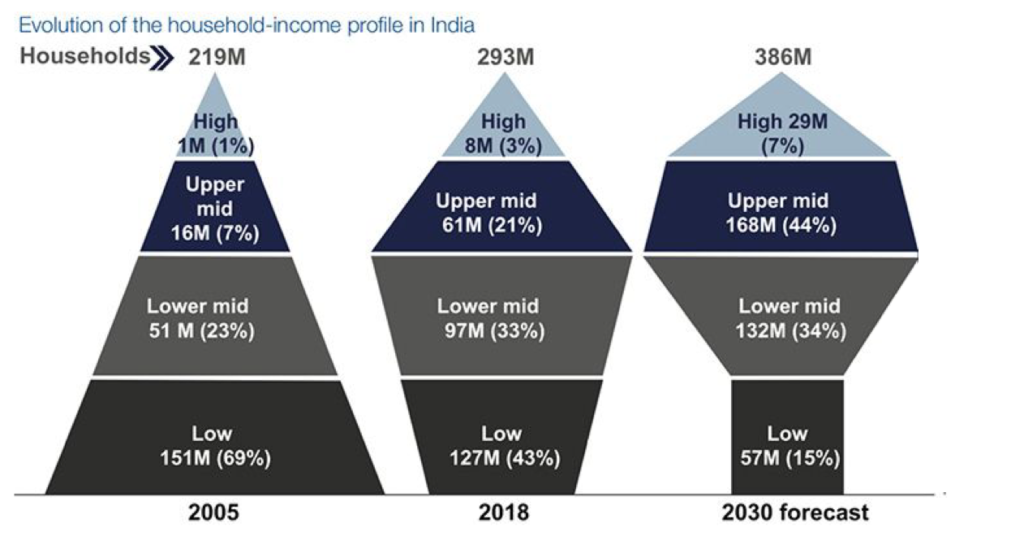
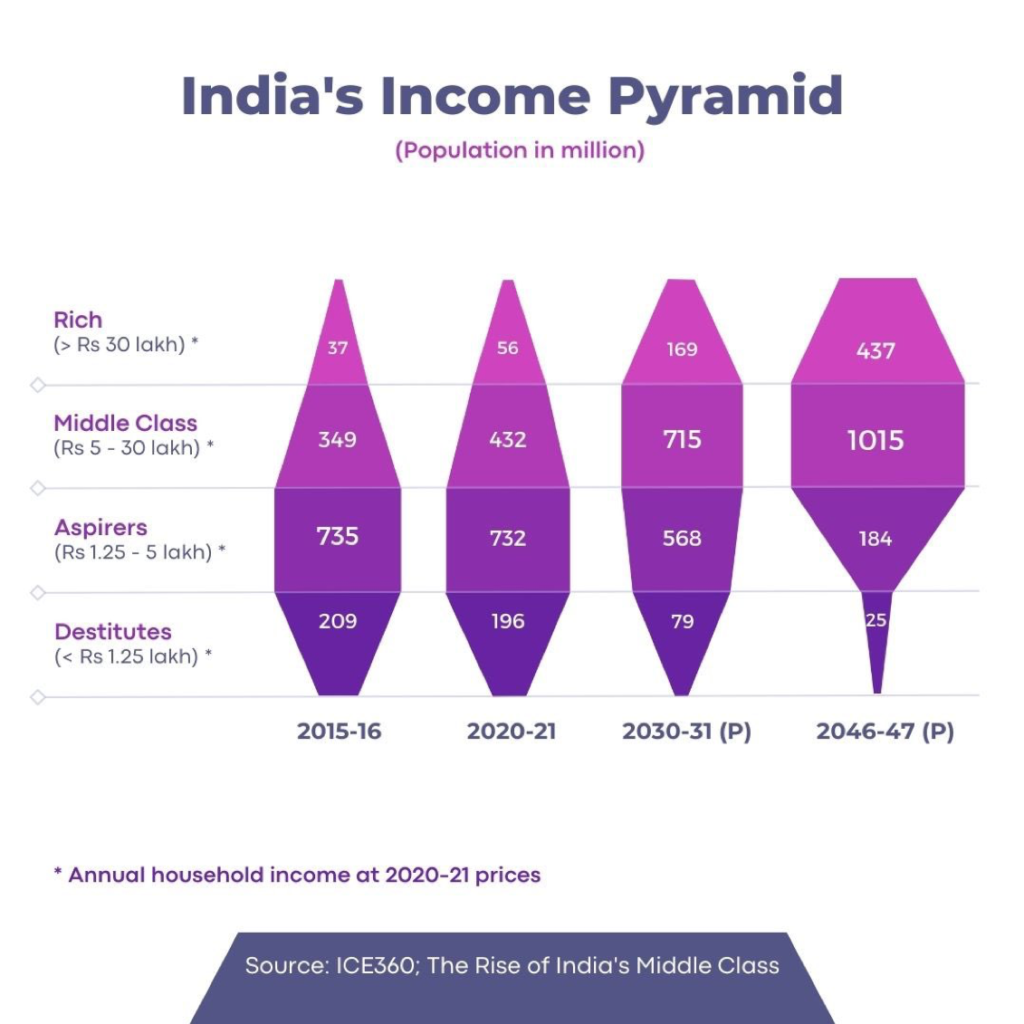
https://www.ice360.in/app/uploads/2022/11/middle-class-brochure-2022.pdf
Furthermore, the living conditions of Muslim women have improved as the state has liberalized divorce laws, as well as the dress code in schools (2 & 5).
Regarding specific policies or reforms such as the ban on Triple Talaq (a practice allowing instant divorce in some Islamic traditions), opinions within the Muslim community are, however, diverse. While some Muslim women have welcomed the ban on Triple Talaq as a step towards gender justice and the protection of their rights, others have voiced concerns about the government’s intervention in religious matters and the manner in which the reform was implemented.
The issue of the hijab and its regulation in educational institutions or public spaces, also sparked diverse opinions within the Muslim community in India. Just as with the ban on Triple Talaq, viewpoints regarding the regulation of the hijab vary among Muslim women. Some Muslim women support regulations on the hijab for reasons that could include personal choice, adherence to certain interpretations of religious practices, or alignment with ideas about cultural integration and uniformity within educational or institutional settings. They might view such regulations as measures to ensure secular spaces or uphold uniformity in educational environments. However, it’s crucial to acknowledge that a significant number of Muslim women also oppose or feel concerned about such regulations. They perceive these measures as encroachments on their religious freedom, cultural identity, and personal choices. They might see the hijab as a symbol of their religious expression and view any restrictions as an infringement on their rights.
Also, the issue of limiting the loudness of the Azaan (the Islamic call to prayer) from mosques, particularly concerning restrictions on the volume of loudspeakers used by Muezzins, has been a matter of contention in some areas of India. Different localities and states in India have implemented varying regulations or guidelines regarding the volume and use of loudspeakers for religious purposes, including the Azaan. These regulations aim to balance religious practices with concerns about noise pollution and maintaining peace in residential areas. The matter has triggered debates and sometimes legal challenges, with courts adjudicating on cases where conflicting interests arose between religious practices and public peace. It remains a contentious issue, and opinions about the limitations on the volume of the Azaan are divided among different sections of society.
Another example of improvements achieved so far relates to the transportation sector: The road and rail network developed tremendously, and the number of domestic airports rose from around 70 to over 140 (3).
The expansion of India’s aviation sector has indeed seen substantial growth and development in recent years. The government focused on improving air connectivity across the country, especially in tier-2 and tier-3 cities, by investing in the development of new airports and the expansion of existing ones. This effort aims to enhance regional connectivity, promote tourism, boost economic growth, and facilitate easier access to air travel for a larger portion of the population. Initiatives like the Regional Connectivity Scheme (UDAN) also played a role in connecting underserved or unserved airports in remote areas, contributing to the overall growth of the domestic airport network.
Additionally, in March 2018, the central government approved the implementation of PM-JAY. This flagship public health initiative has been internationally recognized as a significant step toward achieving universal coverage in India. This new National Health Protection Scheme is for individuals in the bottom two income quintiles. The scheme provides INR 500,000 (USD 7,007) per family per year to cover secondary and tertiary health services, from inpatient to post-hospitalization care (4).
Furthermore, Indian satellites were sent to the sun (Aditya-L1) and the moon (Chandrayaan-3) (6), the external borders in the north were secured, and a merchant ship (Lila Norfolk) was recently freed from the hands of Somali pirates by the Indian Navy (7).
Last but not least, the Union Ministry of Home Affairs (MHA) reported a substantial decrease in terror incidents in Jammu and Kashmir, highlighting a positive trend in the region. According to the MHA, the number of terror incidents has plummeted from 228 in 2018 to a mere 44 in 2023 (8).
- Key Issues and Controversies:
- Muslim Rights: Discussions on Triple Talaq, hijab bans, and the Azaan volume regulations.
- Temple of Ayodhya: Historic dispute over a religious site, with implications for various groups.
- General Elections: Factors influencing electoral outcomes, including economic outlook, identity politics, and governance.
- Economic and Social Development:
- Economic Growth: India’s progress, including increased household incomes and the expansion of domestic airports.
- Congress vs. BJP: Contrasting ideologies, with the BJP emphasizing commonalities in the majority population and the Congress focusing on diversity and secularism.
So I think Modi and his BJP should be looked at less from an ideological and more from a practical point of view. For working Indians, this government comes with the prospect of tremendous economic growth (whether causally linked or not is irrelevant) – and if these expectations should darken one day, its reign will probably come to an end fairly fast.
Finally, a few sentences on Surender Reddy’s article “Various Humanisms – Hindutva and Neohumanism” dated December 31st 2023: Anticipating the General Election in April and May 2024, he takes a stance against Narendra Modi and his BJP – but he doesn’t say it openly, rather he hides his position behind a rejection of all the “three defective Humanisms”. In doing so he puts Fascism (which he calls “evolutionary” Humanism) on equal footing with liberal Humanism (what a twist). Moreover, he claims that the three “defective Humanisms” have already crashed. Accordingly, he writes that “we have witnessed the collapse of Fascism, with the defeat of Germany in World War II (1945); Communism, with the dissolution of Soviet Russia (1991); liberal capitalism, with the Great Recession (2008).” However, according to Surender Reddy’s argument, Fascism (the “expression of evolutionary Humanism“) is proliferating in BJP, RSS and Hindutva. And even liberal Humanism neither collapsed, nor did we experience a Great Recession in 2007-2010. Hence, in praising the only alternative – ‘Neo-Humanism’ – he actually tries to campaign for the Indian Leftists, which align, as usual, with the representatives of vested Muslim interests.
Factors in Favor of BJP:
- Economic Progress: Increased household incomes and infrastructural developments contribute positively to the government’s image.
- Policy Decisions: Initiatives such as banning triple talaq, regulating the hijab and Azaan volume, and resolving the Ayodhya dispute are seen as accomplishments.
- Regional Settlements: Efforts to address long-standing issues like Kashmir and the Ayodhya dispute are perceived as positive actions.
Challenges for BJP:
- Ideological Differences: Hindutva ideology and perceived lack of adherence to secular principles conflict with the Indian Constitution’s secular framework.
- Minority Perception: Some minorities, particularly Muslims, cannot feel fully accepted and represented by the BJP due to historical tensions and policies.
- Violence and Radicalism: Instances of violence against minorities in the past and perception of radicalism among certain leaders definitely affect the party’s acceptability.

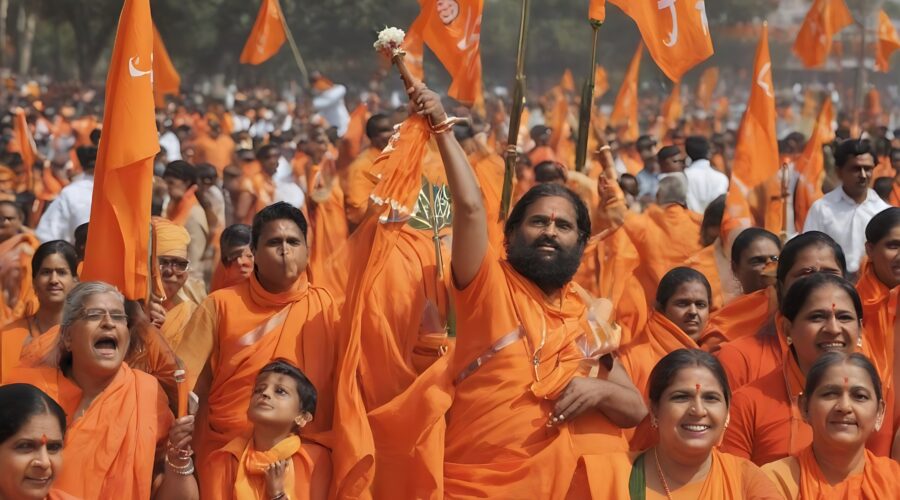
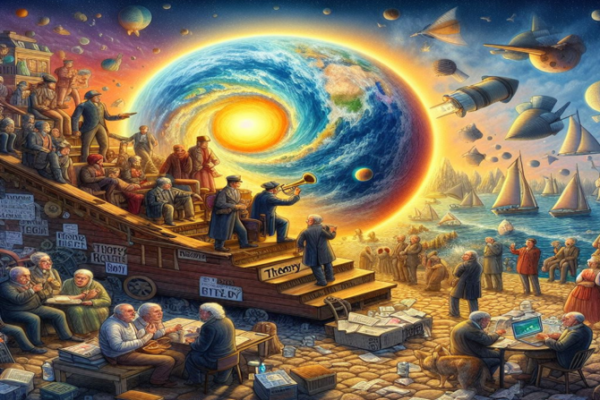
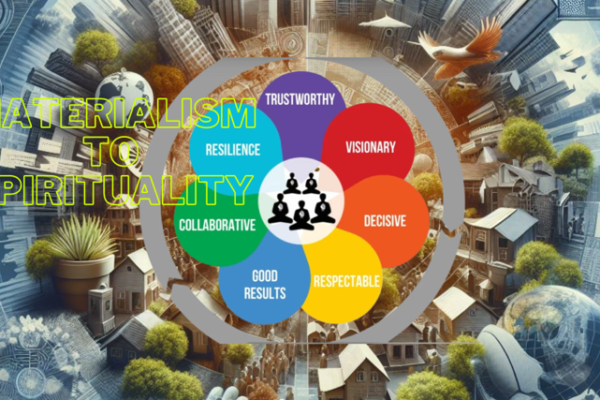
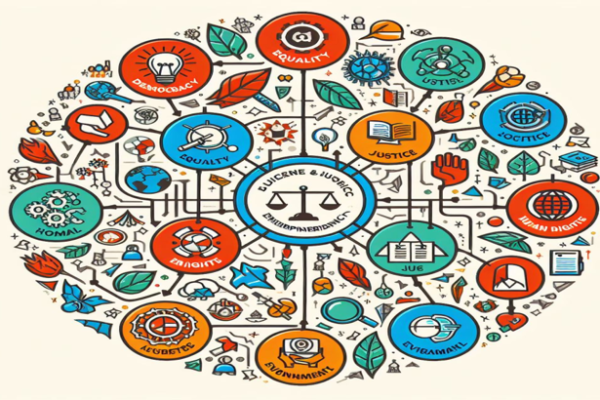
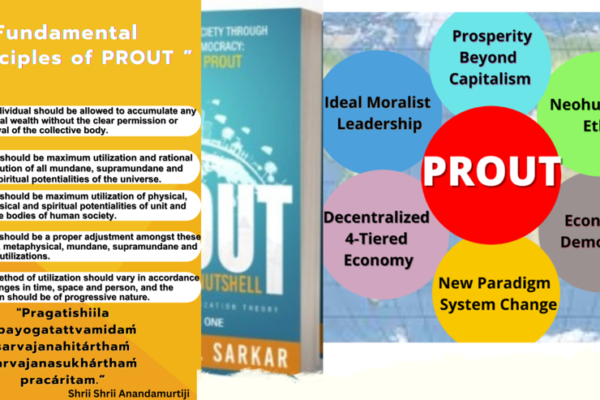
Author: “Hence, in praising the only alternative – ‘Neo-Humanism’ –he actually tries to campaign for the Indian Leftists, which align, as usual, with the representatives of vested Muslim interests.”
Thank you for caring about the contents of the article’ Various humanisms – Hindutva and Neohumanism’. Specific points requiring further elaboration are noted. But, the above-concluding remark in the paragraph on the article is uncalled for personal attack. It only distracts from your dissertation. It can only be redressed by its withdrawal by the author in consultation with the Editorial desk.
This is a detailed and satisfied analysis of the routes of current Indian problematics!
Thank you for the work behind!